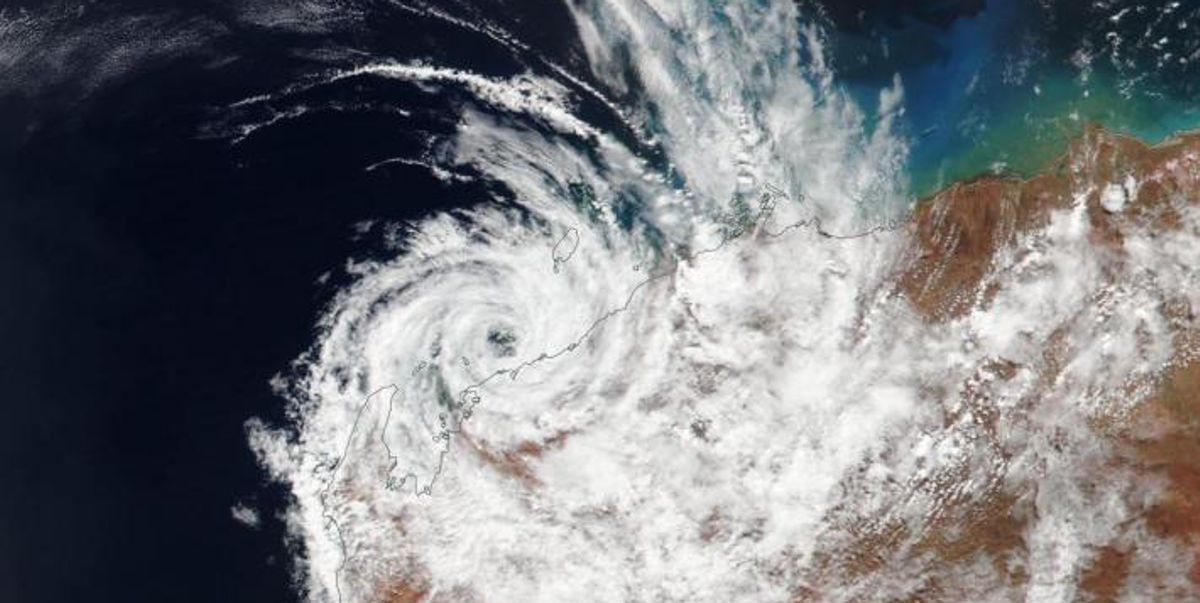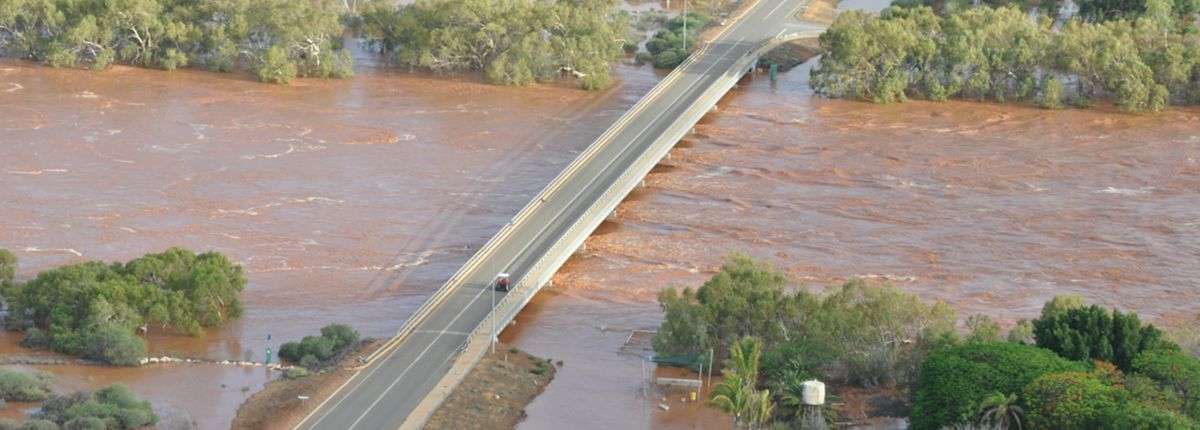Stuut et al.’s paleoclimate record is based on the climate archives recorded in two sediment cores; the 42m long piston-core record of MD00-2361 and the 100m long drillcore ODP122-762B. Both cores were recovered from the continental slope off northwestern Australia.

In this satellite image (copyright: NASA) you see how Tropical Cyclone Veronica makes landfall in northwestern Australia in March 2019, which typically leads to huge amounts of rain, which again makes otherwise empty rivers flow like a champion.

Here you see 9-Mile Bridge that crosses the Gascoyne River near Carnarvon in West Australia. Most of the year the river is totally dry, as can be seen in the car tracks on the river bed. However, just a couple of hours after a tropical cyclone hits land, huge amounts of rain fill up the river with sediment-laden water (see below)

Here you see the same 9-Mile Bridge, now crossing a full Gascoyne River (image from: www.gdc.wa.gov.au). Note how the river has a reddish-brown colour caused by huge amounts of sediments that are washed into the ocean.
One can imagine that these sediments are deposited on the seafloor and can be recognised based on their particle-size signature as well as on their geochemical composition. This is exactly what Stuut and co-workers did; based on the particle-size distribution of the land-derived sediment part of the sediments they recovered in two sediment cores they defined end members, which they assigned to sediment transport. Sediments that were blown through the air (aeolian transport) were generally coarser-grained and better-sorted than sediments that were washed into the ocean by rivers (fluvial transport) draining the northwestern part of the Australian continent.
In addition, the chemical composition of the sediments in the two cores was analysed using an XRF (X-Ray Fluorescence) scanner, showing the occurrence of typical chemical elements, which were also assigned to different modes of sediment transport.
To verify the end members observed in the two sediment cores, Stuut, De Deckker and Bassinot went into the northwestern Australian outback to carry out fieldwork. They sampled both fossil aeolian (dunes) and fluvial systems (river beds and terraces) and analysed their geochemical composition in the same way as they did with the sediment cores. The result was astonishing; the compositions of the end members were of such difference that they could be clearly separated on the basis of the XRF analyses.

Here you see typical examples of the end members that were sampled on land: a desert sand dune, now overgrown with low bushes (left) and a river bed of a now-dry river.
The resulting 5.3 Million-year record is one of the longest of its kind and sheds light on the climate history of the driest inhabited continent in the world.
It shows, for example, that although we experience climate in this part of the world as rather dry, conditions have been much drier in the past and that changes in the monsoonal-rains delivered to this part of the Australian continent vary in sync with global patterns in temperature and sea level.
Paper details: Jan-Berend W. Stuut, Patrick De Deckker, Mariem Saavedra-Pellitero, Franck Bassinot, Anna Joy Drury, Maureen H. Walczak, Kana Nagashima, & Masafumi Murayama (2019) A 5.3-Million-Year History of Monsoonal Precipitation in Northwestern Australia. Geophysical Research Letters, doi:10.1029/2019gl083035.
Follow this link to read the paper.